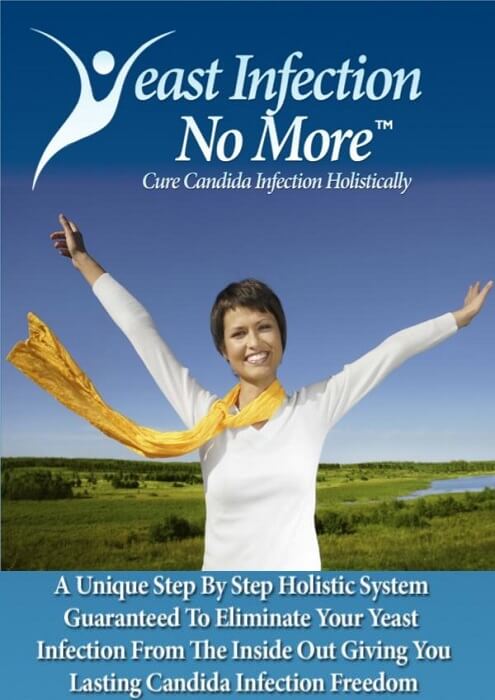See all "Itching" Section Topics
- Summary & Introduction
- General Research on Essential Oils for Itching
- The Use of Peppermint Essential Oil for Itchiness
- The Use of Chamomile for Itchiness
- Candida Fighting Carrier Base for Essential Oils
- How to Use Essential Oils for Yeast Infection Itchiness
- An All-Natural, 12 Hour Yeast Infection Cure
- Article Sources
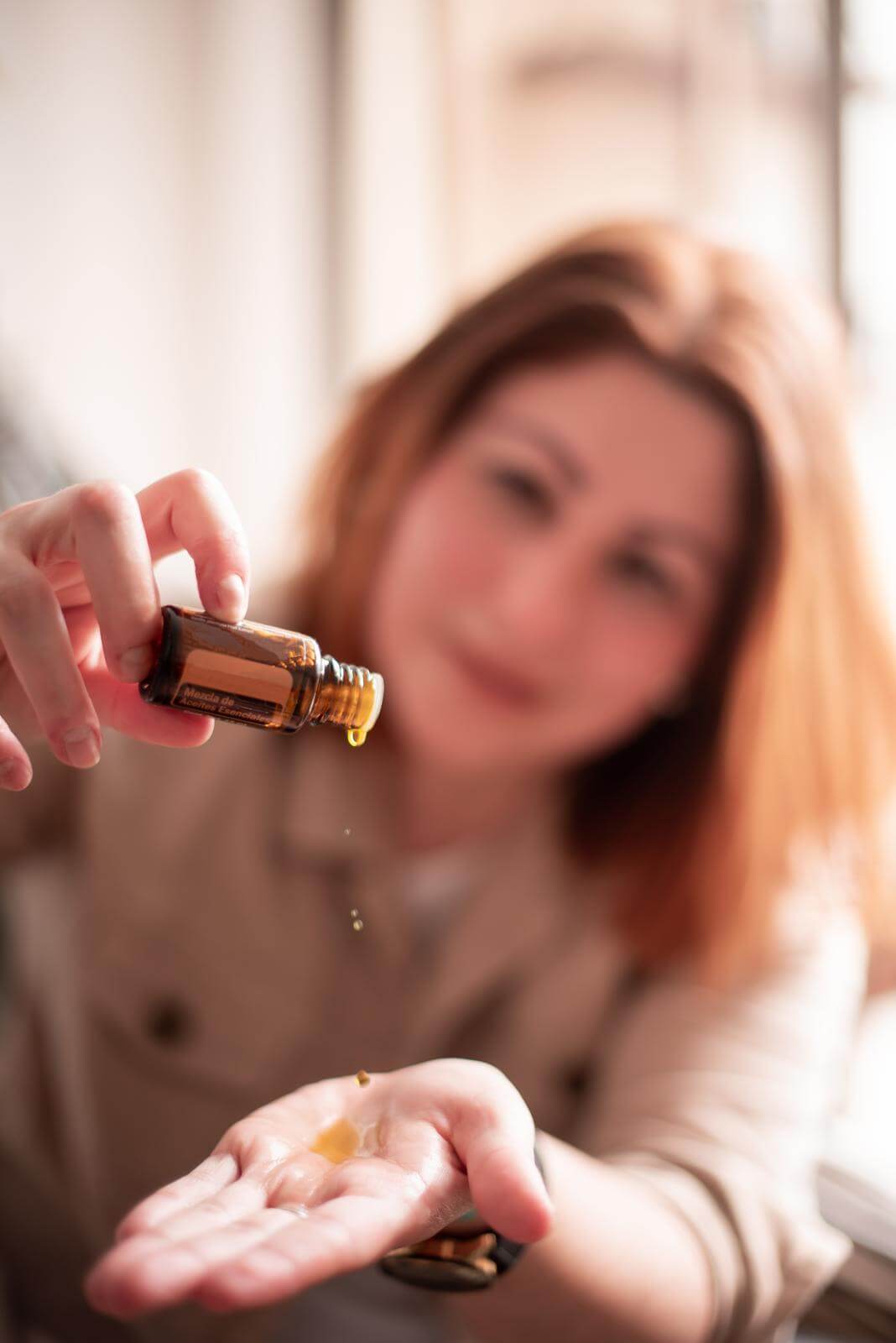
The perfect essential oils for yeast infection itch will be those that both fight Candida (Candida is the genus of fungi that causes yeast infections) and soothe skin itchiness. But, are there any oils that can perform both of these functions? The answer is certainly ‘yes!’ Two essential oils, peppermint (Mentha piperita) and chamomile (Matricaria recutita / Matricaria chamomilla), both fight Candida and can alleviate skin itchiness.
In addition to chamomile and peppermint essential oils, you are probably going to want to incorporate tea tree oil (Melaleuca alternifolia) into your therapy as well. Tea tree oil is a powerful Candida fighting substance, and works well against fungal infections—yeast infections included. In addition to being able to attack Candida, tea tree oil gives a soothing, tingling sensation that can feel good on itching skin.
It should be noted, you do not want to use undiluted essential oils. As you may know, undiluted essential oils can cause skin irritation depending upon the oil. This is especially true for tea tree oil. Consequently, you will want to use a carrier substance, say a gentle oil like sesame or coconut oil. Yet, with the same logic we applied to essential oils, you might want to use a carrier substance that is gentle, fights Candida, and can help to alleviate itchiness. One natural substance that does all these three things is aloe vera (Aloe barbadensis) gel.
Aloe vera gel might help to reduce the severity of itchiness, and could heal skin damaged by a yeast infection. Additionally, aloe vera gel can inhibit; i.e., stop the growth and development of; Candida. As a result, this gentle, natural gel would be an ideal carrier medium for you to dilute your essential oils in. A simple strategy for combining the aforementioned essential oils in aloe vera gel will be discussed towards the end of this article. You can use this recipe as a template for creating your own natural, essential oil treatment that can help stop yeast infections and the itching that these infections can cause!
For your convenience, the following, more comprehensive discussions about each of these natural treatments are listed below:
- Peppermint Essential Oil for Yeast Infections
- Tea Tree Oil for Yeast Infections
- Chamomile for Yeast Infection
- Aloe Vera for Yeast Infections
A 1/2 Day & Yeast is Gone!
Linda Allen suffered from yeast infections for years. Through researching natural medicine & Candida, she found an efficacious solution!
Linda is one expert you want on your side! Let her show you how to get rid of a superficial yeast infection in just 12 hours; AND, keep it gone!
A 60-day, 100% money back guarantee is provided.
Visit Official Site!General Research on Essential Oils for Itching
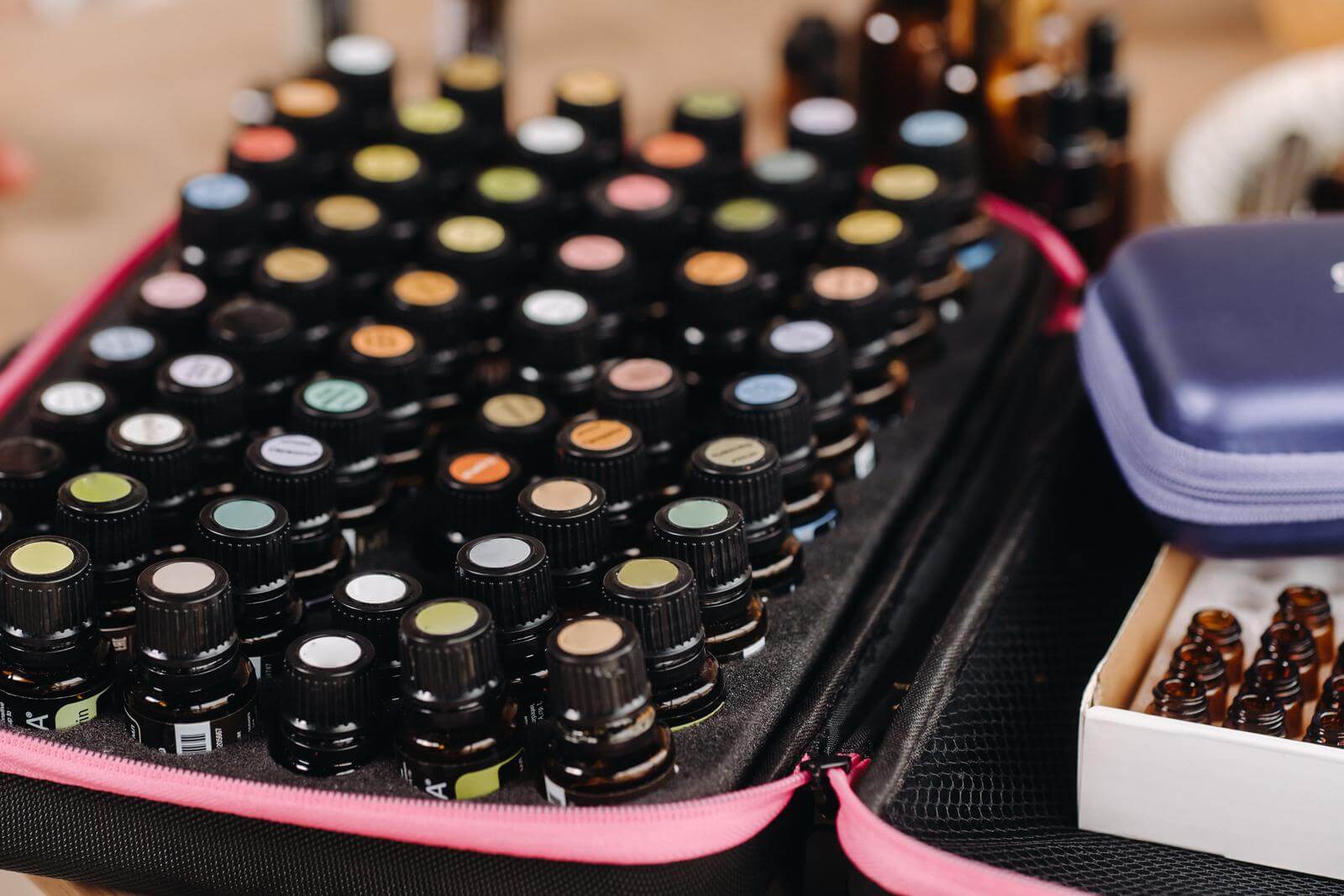
The first study we will look at, investigated how essential oils could help with itching. This journal article was published in the Iranian Journal of Nursing and Midwifery Research [15.4 (2010): 240]. The study dealt with people who had renal failure and were undergoing dialysis (having their blood cleaned as their kidneys could no longer perform this task). The reason people with this type of renal failure were utilized, is due to this condition’s association with itching.
According to this study, unusual itching is one of the most common problems of people with end-stage kidney failure undergoing dialysis. At the time of this study’s writing, a recently proposed treatment for excessive itching, was the use of complementary medicine; i.e., essential oils. The study’s goal was therefore to see if essential oils could relieve itching in dialysis patients.
The patients in the study were all over 18 years of age, had undergone dialysis for more than 3 months, had problems with itchiness during the past two weeks before sampling, had no skin problem except for uremic pruritus (also known as chronic kidney disease associated pruritus; and, pruritus is a term for itchiness), and had not used any itch relieving medication before and during sampling.
Skin itchiness was evaluated according to its site, severity, and frequency of itching. Itching severity scores were given a value between 0 and 4; and, itching frequency was scored with a value between 0 to 3. Also, site scores were given values of 1 or 2. The range of total scores was from 0 to 9; with 9 indicating the most severe cases. The study defined a problem with itching as having a score of 3 or more.
For the essential oil treatment, all of the participants on dialysis received a 7 minute massage with a diluted essential oil mixture in all dialysis sessions for two weeks. The essential oil combination used was tea tree oil, lavender (more on lavender essential oil here), and mint. This mixture of essential oils was diluted to 5% in a carrier oil. The carrier oil was sweet almond oil. Itching scores were ascertained at the end of this treatment.
The essential oil therapy did help some with itching. The average itching score (based off the aforementioned 0 to 9 scale) before treatment was 7.40. After receiving the messages with the essential oil mixture, the average itching score dropped to 5.85. So some noticeable improvement was attained. The study found these figures of itchiness scores, before and after treatment, were statistically significant.
Eliminate Bacterial Vaginosis & Vaginal Odor
Jennifer O’Brien is one prominent expert on BV that knows how to get rid of vaginal odor. BV is a common infection that you don’t have to put up with.
Jennifer will show you how to naturally eliminate vaginal odor in just 3 days.
A 60-day, 100% money back guarantee is provided.
Visit Official Site!The Use of Peppermint Essential Oil for Itchiness
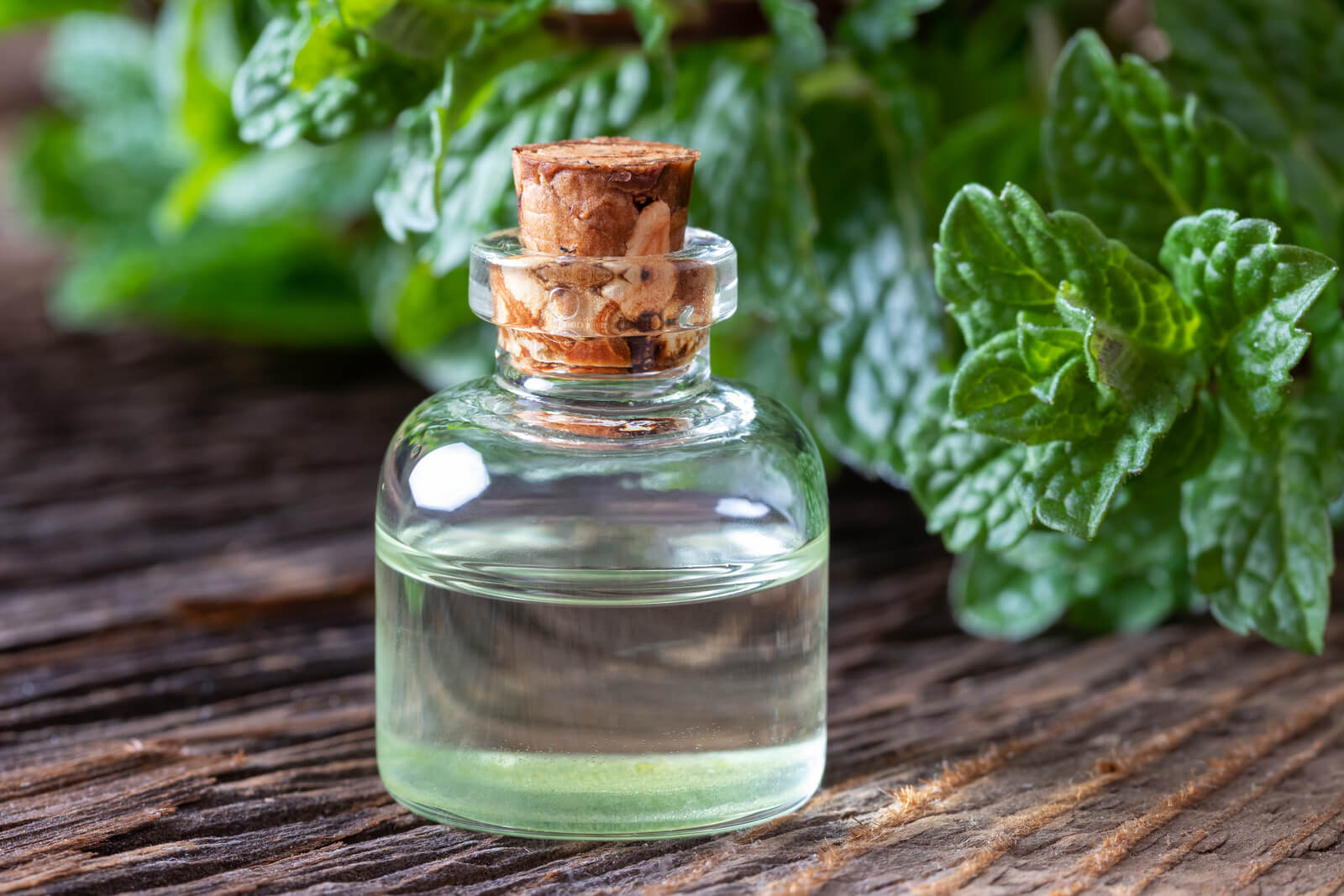
The next study we will investigate was published in the Iranian Journal of Pharmaceutical Research [11.4 (2012): 1073-1077]. This study sought to determine how peppermint essential oil would work to stop itching in pregnant women. According to this journal article, itching is one of the most common skin symptoms. And, generalized itching occurs in 1% to 8% of pregnant women. This itching can be uncomfortable; especially during the night.
The study utilized 96 randomly selected women who were diagnosed with pruritus gravidarum. Pruritus gravidarum is generalized, severe itchiness that occurs during late pregnancy; in this condition there are no skin lesions that occur—unless induced by scratching. In this study, 47 women were in the case group; i.e., they received an essential oil treatment. The remaining 49 women were allocated to the control group; i.e., they did not receive an essential oil treatment.
The type of oil used on the pregnant women was, in the case group, comprised of peppermint essential oil diluted to 0.5% in a carrier oil. The carrier oil was sesame oil. Identical placebos without essential oil were given to the pregnant women in the control group. The women in both groups used their respective oils topically.
The study used a scale of 1 to 10 (known as a visual analogue scale) to score the itchiness; a score of 10 being the most intense itchiness. The placebo group had an average itchiness score of 5.9 before treatment. After treatment with only sesame oil, the placebo group reported an average itchiness score of 3.25. Concerning the case group, which received the peppermint essential oil mixed with sesame oil, these women had an average itchiness score before treatment of 5.76. After the case group used the peppermint oil mixture, these women had an average itchiness score of 1.06.
The study found that the difference in itching before and after treatment, in both case and control groups, was statistically significant. We can therefore see that the use of sesame oil alone helped to reduce itching. However, the addition of peppermint essential oil to the sesame oil appears to have augmented the therapeutic efficacy of the treatment. The following chart was taken from this study and shows graphically the difference in itching between both groups, before and after treatment.
![Pictured here is a graph showing how peppermint essential oil and sesame oil got rid of the itching in pregnant women. The study was published in the Iranian Journal of Pharmaceutical Research [11.4 (2012): 1073-1077]. According to the research, peppermint essential oil mixed with sesame oil reduced pregnant women’s itchiness by approximately 82%. The dashed line represents peppermint oil and sesame oil. The solid line represents sesame oil alone. Itchiness scores are denoted by the chart’s y-axis.](/img/How-Peppermint-Oil-and-Sesame-Oil-Cured-Itchiness.png)
The next study we will examine, looked at how topically applied peppermint oil would affect chronic itching. The research was published in Clinical, Cosmetic and Investigational Dermatology [9 (2016): 333]. According to the study, itchiness is one of the most common skin complaints; and, the study found that peppermint oil could be helpful in reducing the intensity of skin itchiness.
The study utilized 50 people, both male and female, of different ages. These 50 people were suffering from chronic itching problems. These problems may have been caused by diabetes, kidney problems, or liver complications. The average age for these individuals was about 50 years. The study did not use people who had some kind of skin disease that causes itching; e.g., contact dermatitis or psoriasis. Additionally, people who suffered from acute pruritus; i.e., having itching for less than 6 weeks; were also excluded from participating in this research.
The people selected to participate in this research were divided into two groups: a case group of 25 people, and a control group of the remaining 25 people. Subjects in the case group were given a mixture of petroleum jelly with 5% of the mixture consisting of crude peppermint essential oil. Those subjects in the control group were given only petroleum jelly without any peppermint oil in it (serving as a placebo). Both groups of people used their respective substances for two weeks.
The study used the 5-D itch scale to quantify the participant’s itchiness symptoms. The average itchiness score for people in the case group (using 5% peppermint oil) before treatment was 15.18. After treatment for two weeks with 5% peppermint oil, the average itchiness score for this group dropped to 7.94. The study found there was a significant improvement for itch scoring parameters in this group; such as distribution of itchiness in body areas, the degree itching caused disability, duration of itch, and intensity of itch.
Concerning the control group, which just used petroleum jelly, their average itchiness score before treatment was 14.54. After using petroleum jelly only for two weeks, this group’s average itch score only declined to 13.47.
The study concluded by stating that peppermint oil really did help reduce people’s itching problems. According to the researchers, peppermint oil is a low cost, effective, easy to use, and safe treatment for itching problems. The following quotation was taken from this study’s conclusion:
The topical treatment of chronic pruritus with peppermint is effective, easy to use, safe, cheap, has favorable odor, and is more acceptable for whom topical and systemic treatments tend to be irritating, contraindicated, or less well tolerated. This therapeutic option for chronic pruritus has excellent results and is free from toxic side effects.
Clinical, Cosmetic and Investigational Dermatology [9 (2016): 333]
Does Peppermint Essential Oil Heal Yeast Infections?
The answer to this question is certainly "YES." To elucidate this topic, is however, beyond the scope of this article. If you would like more very comprehensive information proving peppermint oil can cure a yeast infection, Candida Hub has an entire article dedicated to this topic! In the article, you will find many studies that demonstrate this essential oil is a proven Candida fighter. It would be a great idea to use this oil as it can bring about a salubrious healing effect that fights itchiness and Candida simultaneously. You can learn more about peppermint oil and Candida here: Peppermint Essential Oil for Yeast Infections.
Clair Goodall: Author & Nature Lover
Clair Goodall is a bee-obsessed natural medicine convert from Minnesota. She is one expert you might want to know more about!
Clair will help you protect you and your family from toxic products and chemicals and help you discover solutions from nature.
Also, Clair’s book is backed by a 60-day, 100% money back guarantee
Visit Official Site!The Use of Chamomile for Itchiness
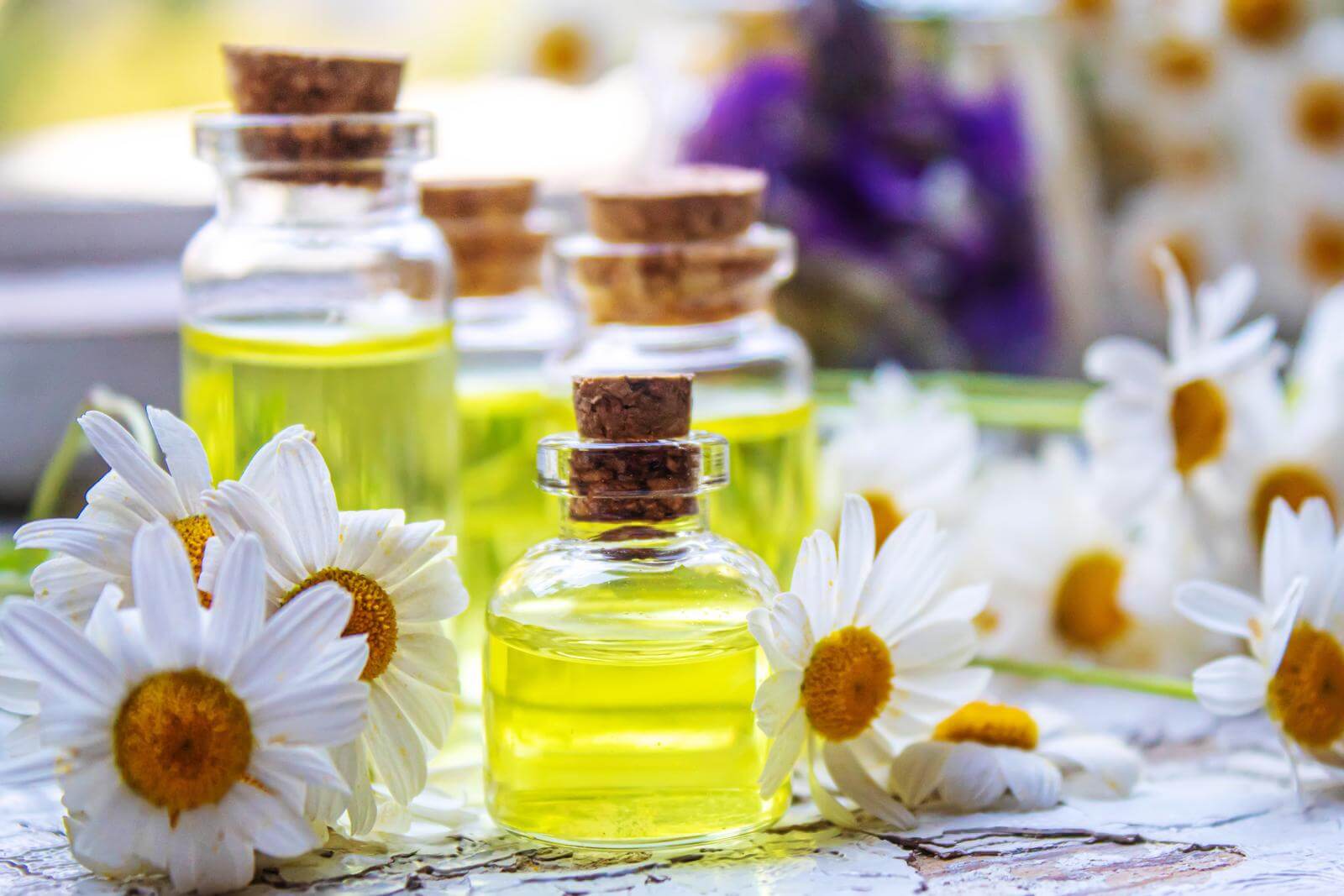
Another study discusses the herb chamomile for relieving itching (you can also find chamomile available in essential oil form). The study was published in Dermatologic Therapy [16.2 (2003): 175-180]. According to the journal article, chamomile has a long history of being used as a soothing agent in either topical or oral form. Additionally, chamomile tea also has a long history as a soothing agent. This herb has also been studied in Germany; and, it has been demonstrated that an herbal compress (a cloth that is soaked in a medicinal fluid and held tightly to the skin for a period of time) of chamomile is equivalent to low concentrations of hydrocortisone (hydrocortisone is used to treat a variety of skin conditions; such as itching in the outer vaginal area).
This study states there is one potential downside to the use of chamomile for skin itching and inflammation: possible allergic contact dermatitis.
The late Dr. James Duke, a major authority on the use of medicinal herbs, also concurs that chamomile can be used to alleviate itching. In Dr. Duke’s book, The Green Pharmacy, he writes that chamomile can be used to resolve itching. According to Dr. Duke, European aromatherapists recommend massaging chamomile preparations to treat skin problems such as itchiness and hives. The book further states that there are chemical compounds present in this herb that possess significant anti-allergic and anti-inflammatory efficacy.
Dr. Duke also discusses some of the possible side effects of using chamomile. According to Dr. Duke, you should use this herb cautiously if you have hay fever. This is because chamomile is a member of the ragweed family; consequently, some people may develop allergic reactions to this herb. However, it is also stated that documented cases of allergic reactions to chamomile are extremely rare. Dr. Duke suggests monitoring your condition the first time you use this herb. And, if it appears like the herb is helping, keep on using it. If the chamomile preparation that you are using appears to make the situation worse, discontinue its use.
In another book by Dr. James Duke, The Green Pharmacy Herbal Handbook, chamomile is discussed. According to Dr. Duke, when chamomile was tested against hydrocortisone, chamomile was superior to this drug for reducing skin inflammation. Additionally, chamomile was just as good as hydrocortisone at treating eczema.
Does Chamomile Cure Yeast Infections?
Just a few micrograms of chamomile extract can inhibit Candida albicans. Candida albicans is the species of Candida that is the most virulent; additionally, it causes about 80% of all Candida infections (Fidel, et. al; 1999). Louise Tenney, in her book Candida Albicans: A Nutritional Approach, states that German chamomile contains chemical compounds that have the ability to kill Candida. In addition to inhibiting the growth of Candida, it can also inhibit some bacteria. To learn more about this herb and using it against Candida, you can find out more here: Chamomile for Yeast Infection.
Candida Fighting Carrier Base for Essential Oils
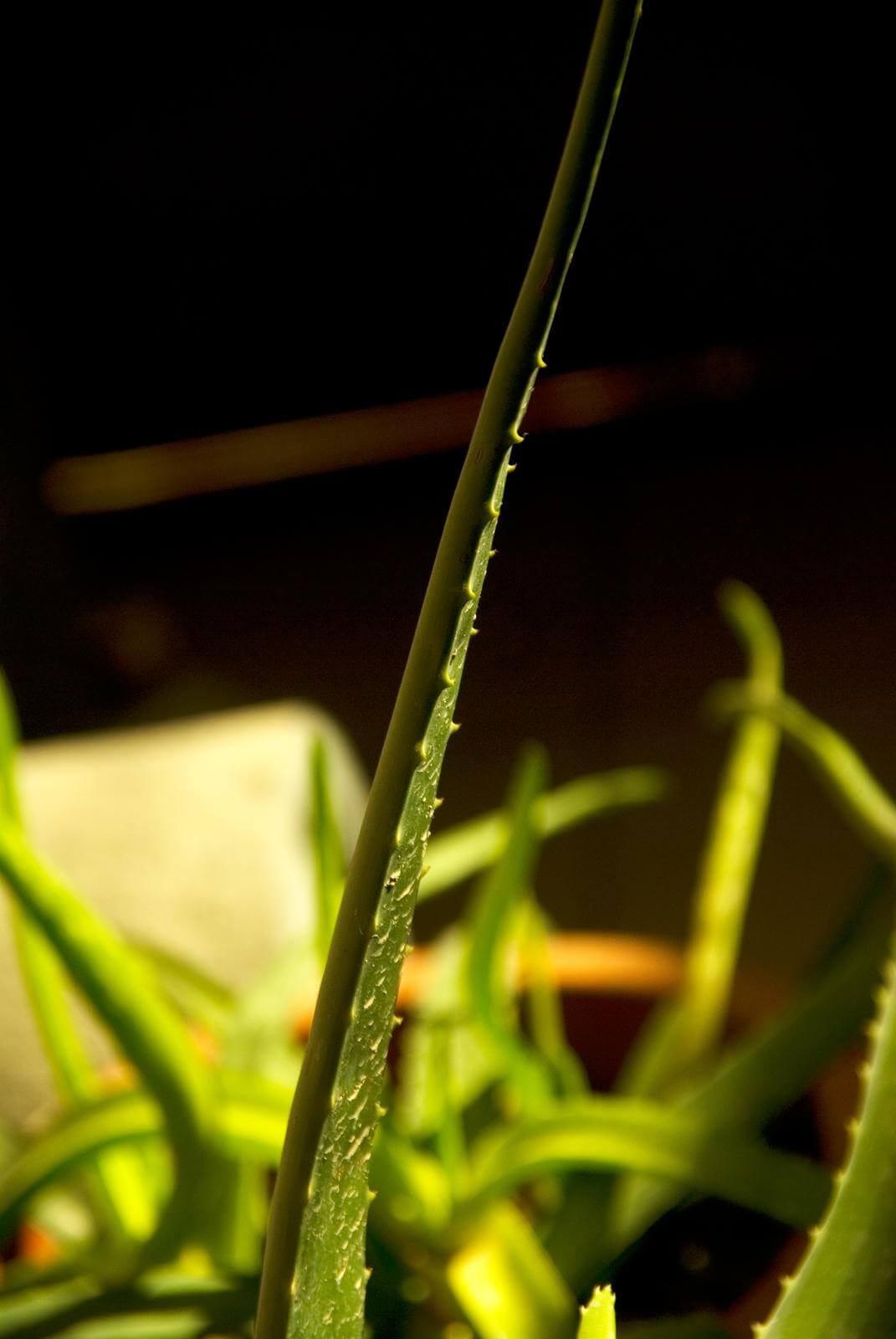
The book Bioactive Dietary Factors and Plant Extracts in Dermatology also discusses aloe vera. The book cites a study of men who suffered chemical war-fare injuries from sulfur mustard; which is very harmful to the skin. In the cited research, a cream consisting of aloe vera and olive oil was able to help alleviate itching in these men. The cream reduced frequency of itching, and reduced the average itchiness scale scores. The study found that this mixture of aloe vera and olive oil may be a promising therapeutic alternative for helping relieve the symptoms of mustard gas exposed patients.
In a study published in International Journal of Dermatology [30.10 (1991): 679-683], a very old study was cited concerning the use of aloe vera for the treatment of vulvar itching. The cited research was published all the way back in 1937. The cited study stated palmar eczema and vulva itching could be treated effectively with whole-leaf aloe vera gel applied topically.
Can Aloe Vera Heal a Yeast Infection?
Aloe vera can inhibit the growth of Candida; but, it may not kill it. Yet, stopping the growth of Candida is important; as this can give the immune system an upper hand in the fight against this pathogen. Additionally, of course, aloe vera application can halt the further spread of Candida due to its inhibitory action against this yeast. Therefore, aloe vera is a great choice to help stop Candida so the immune system can start to prevail against the infection. Again, the full explanation of aloe vera as a yeast infection treatment is beyond the scope of this article. Candida Hub has a comprehensive article on just this topic. If you would like to find out more about using aloe vera as a Candida treatment, you can find out more here: Aloe Vera for Yeast Infections.
As you may have guessed, because aloe vera appears to be a capable reliever of skin itching, and it is a capable Candida fighting herb, it makes a perfect choice to use as a carrier base for essential oils. Aloe vera is also very gentle, and soothing, to the skin; and, should help restore skin that Candida has damaged. In tandem with essential oils, aloe vera can probably provide some much needed relief to painful, itchy skin a yeast infection has caused.
How to Use Essential Oils for Yeast Infection Itchiness
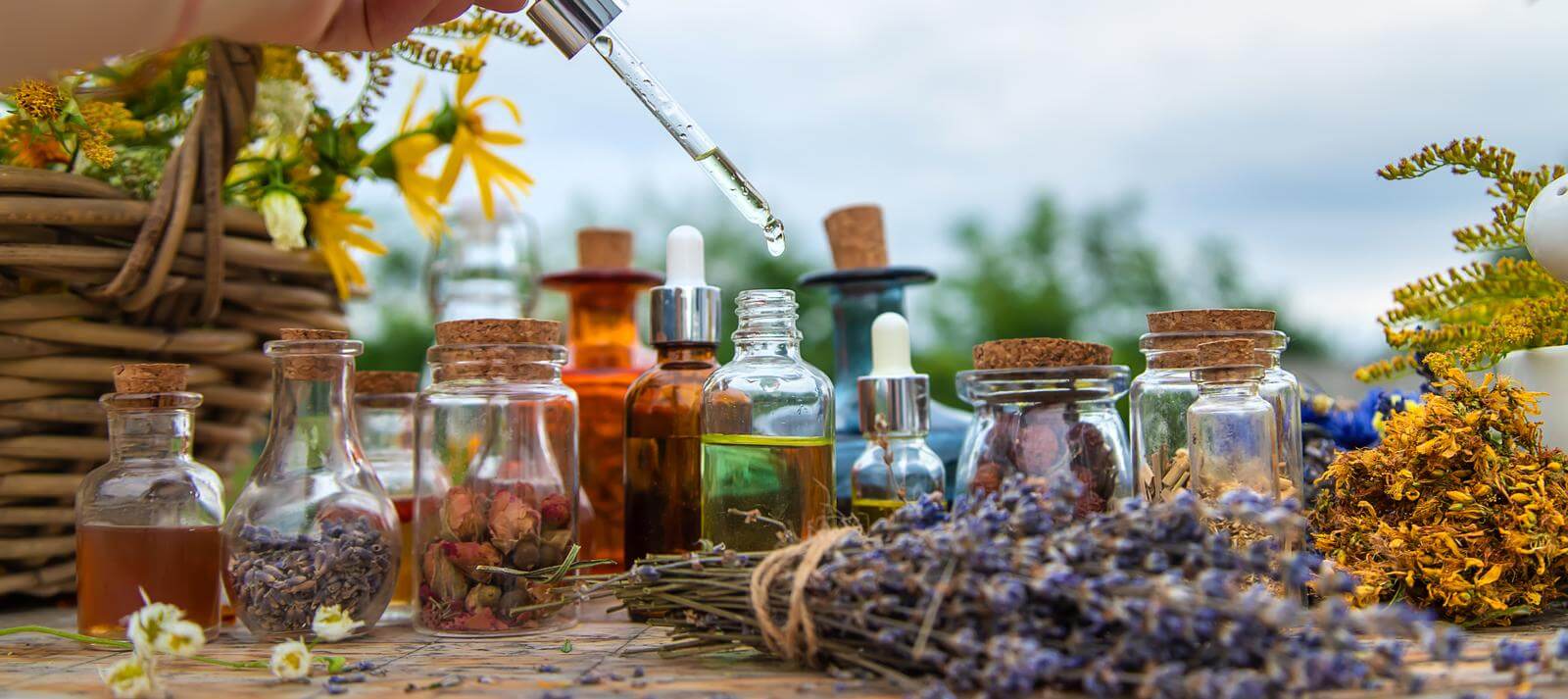
When you use essential oils, it is probably wise to do a small patch test with each oil; before you use it on a sensitive area of the body. To perform a patch test, simply put a small drop of the oil on the skin of your arm. Wait for an hour and see if your skin reacts at all to the essential oil. If, after the hour has passed, your skin appears to be in good shape, you can have more assurance that using it on more sensitive skin will not cause a problem.
Just remember, essential oils are powerful; and you will often not require strong concentrations to produce a Candida killing or inhibiting effect. Undiluted essential oils can cause skin irritation; so try and avoid using pure essential oils on the skin. Opt for some type of carrier oil to dilute them in.
To create an efficacious essential oil mixture to stop itching caused by a yeast infection; and hopefully heal it too; you can base your therapy on this outline:
- Use aloe vera gel for your carrier base. You will add in the essential oils to this gel.
- Add in enough tea tree oil (more about tea tree oil for Candida here) to comprise 2% of the total volume of your mixture. This essential oil may be able to impart a soothing sensation to your gel mixture as well.
- Add in peppermint oil to comprise 5% of your total mixture volume.
- Add in a few drops of chamomile essential oil to the mixture.
- Mix the essential oils and aloe vera gel together.
- Apply this mixture to the area of concern twice a day.
- Try not to use this mixture for more than two weeks; and if you feel discomfort at any time, wash it off and discontinue using it. You can always reduce the concentration of essential oils to produce a gentler treatment. Additionally, the removal of tea tree oil (which can be irritating to the skin) may also greatly help reduce any discomfort that you feel.
Dr. James Duke, in his book The Green Pharmacy, states that mixing phytochemicals (the chemicals in plants) together can result in a synergistic effect. When Dr. Duke came down with a fungal infection, he would mix together black walnut, garlic, and tea tree oil and use this mixture medicinally. And, there was a method to using these medicinal herbs simultaneously.
According to Dr. Duke, combinations of antifungal herbs almost always work better than single herbs. This may be due to the phytochemicals in each herb attacking a fungal pathogen in a different way. A quote taken from The Green Pharmacy, gives Dr. Duke’s own rationale:
The synergy—the harmonious working together—of antifungal herbs has been demonstrated in several studies. In one test of ten plant species whose oils were antifungal, researchers noted that "combinations of the antifungal essential oils increased their activity remarkably." In a similar study, researchers noted that "in all the oil combinations, the antifungal potency was found to increase over individual oils."
The Green Pharmacy [Rodale, 1997]
This same logic may also apply well to Candidiasis and the itching this condition can cause. By utilizing chamomile and peppermint oils together—each able to fight Candida and soothe itching—you may arrive at a far superior remedy than you would have by using only one of these oils. The addition of the powerful antifungal tea tree oil should help to stop the development of Candida as well; and it can feel good on itchy skin. Combine that with the inhibitory power of aloe vera gel, and the soothing ability of this gel, you might feel much better shortly after you apply this salubrious mixture!
An All-Natural, 12 Hour Yeast Infection Cure

Yeast infections affect many men and women; yet, women appear to be more prone to these infections. Yeast infections affect 75% of all women; and a smaller proportion of these women will also suffer from repeat yeast infections. Repeated infections by Candida can instigate a significant amount of grief and financial coast; and, they can be difficult to treat.
One woman, who suffered from repeat yeast infections, was Linda Allen. In Linda’s situation, she suffered from more than just outward infections; she also had a lot of Candida in her body. The excessive growth of Candida in her body resulted in a drastic, negative impact on her health. An additional, important factor that kept Linda in very poor health, was her lack of understanding about her condition. Linda, at the time, did not know that she had systemic Candidiasis (a condition where Candida had invaded her body). The medical professionals she consulted did not seem to know what was wrong with her either. In all, Linda would suffer for about 12 years with this terrible health problem.
The important revelation about the cause of her poor health, and frequent yeast infections, was given to her by a naturopathic practitioner. When Linda visited this naturopath, they knew exactly what was wrong with her: systemic Candidiasis. Although the naturopath did not provide her with a permanent solution to be free from Candida; they did give her a place to start working towards better health.
After Linda discovered the cause of her health problems, she began to extensively study Candida and natural medicine. Linda read many books, and she tried many purported treatments; yet, nothing seemed to totally eliminate her health problems. Linda would even inquire of health professionals kind enough to lend her some of their time.
As time went on, Linda began to gain a fuller understanding of her condition, and began to assemble a natural approach to eliminating Candida from her body. When Linda compiled her approach, she first refined it for a year before she tried it on herself. Afterward, she put her new treatment plan into action.
When Linda used her new, natural treatment plan, she found that her repeated yeast infections stopped. As time went on, Linda found that she was regaining her health. It wasn’t long before Linda was back in great health! Her new treatment plan had proven very effective; she was finally able to live her life free from the distress of systemic Candidiasis.
Linda showed her new system to a doctor; and, the doctor thought Linda might really have something. The doctor suggested that Linda provide others with her treatment plan to see how they would respond. Linda took this advice and began sharing her findings with other people who were suffering from Candida. It was not long before she began hearing positive reports from those who gave her system a try. Not only had Linda been set free from yeast related health problems, now other people were seeing the same results.
Linda has since published an entire book detailing her natural solution for curing yeast infections and systemic Candidiasis. Possibly one of the most helpful aspects of her book, is a fast acting treatment plan that can eliminate all yeast infection symptoms in just 12 hours. Linda’s methods are based on natural medicine, and can be much safer to use than synthetic, prescription drugs.
Linda has published her book with a large online retailer, a subsidiary of the United States based company Keynetics Incorporated. Linda’s publisher offers her book as a digital product, and it can be downloaded right away. In addition, Linda’s publisher provides a 60 day, 100% money back guarantee on her book. If you decide to try Linda Allen’s book, and you find it unsatisfactory for some reason, you can get a prompt refund of your money. Linda’s publisher handles her sales and provides a safe, easy purchasing experience.
If you would like to get more information about Linda Allen’s book, read testimonials of others who have used her natural program, or to find out more about her personal story; you can learn more at Linda Allen’s website.
Author: Mr. Geoff Kent

Geoff Kent is a natural medicine enthusiast who has been researching and writing about natural medicine since 2008. Geoff is primarily a web developer but also researches and authors written and video content about natural health. Geoff has a bachelor’s degree in Management Information Systems from the University of Northern Iowa.
Disclaimer
The information on this website is not a prescription for anyone. This information is for informational or educational purposes only, and is not a substitute for professional medical advice or consultations with healthcare professionals.
Affiliate Disclosure
Some of the links provided on this website are affiliate links. When a purchase is made through these links, Candida Hub earns money from commission. This helps to keep the website up and helpful to people for free. Thank you for any support!
Stay Up to Date
If you enjoyed this article, consider following / liking our Facebook page. This page is primarily utilized to alert followers of new articles that are put on Candida Hub. Candida related news is also discussed. While you are there, you can see what has been more recently added to Candida Hub.
SOURCES:
- https://www.ncbi.nlm.nih.gov/pmc/articles/PMC3203284/ — Shahgholian, Nahid, et al. "Effect of aromatherapy on pruritus relief in hemodialysis patients." Iranian Journal of Nursing and Midwifery Research [15.4 (2010): 240].
- https://dx.doi.org/10.22037/ijpr.2012.1199 — Akhavan Amjadi, Marjan, Faraz Mojab, and Seyedeh Bahareh Kamranpour. "The Effect of Peppermint Oil on Symptomatic Treatment of Pruritus in Pregnant Women." Iranian Journal of Pharmaceutical Research [11.4 (2012): 1073-1077].
- https://doi.org/10.2147/CCID.S116995 — Elsaie, Lotfy T., et al. "Effectiveness of topical peppermint oil on symptomatic treatment of chronic pruritus." Clinical, Cosmetic and Investigational Dermatology [9 (2016): 333].
- https://doi.org/10.1046/j.1529-8019.2003.01626.x — Millikan, Larry E. "Alternative therapy in pruritus." Dermatologic Therapy [16.2 (2003): 175-180].
- Google Books — Dr. James Duke. “The Green Pharmacy: New Discoveries in Herbal Remedies for Common Diseases and Conditions from the World's Foremost Authority on Healing Herbs.” Rodale, 1997. ISBN: 9780875963167
- Google Books — Dr. James Duke. “The Green Pharmacy Herbal Handbook: Your Everyday Reference to the Best Herbs for Healing.” Macmillan, 2002. ISBN: 9780312981518
- Google Books — Louise Tenney. “Candida Albicans: A Nutritional Approach.” Woodland Publishing, 1986. ISBN: 9780913923283
- https://doi.org/10.1128/CMR.12.1.80 — Fidel, Paul L., Jose A. Vazquez, and Jack D. Sobel. "Candida glabrata: review of epidemiology, pathogenesis, and clinical disease with comparison toC. albicans." Clinical Microbiology Reviews [12.1 (1999): 80-96].
- Google Books — Ronald Ross Watson, Sherma Zibadi. “Bioactive Dietary Factors and Plant Extracts in Dermatology.” Springer Science & Business Media, 2012. ISBN: 9781627031677
- https://doi.org/10.1111/j.1365-4362.1991.tb02607.x — Shelton, Ronald M. "Aloe Vera: Its Chemical and Therapeutic Properties." International Journal of Dermatology [30.10 (1991): 679-683].

